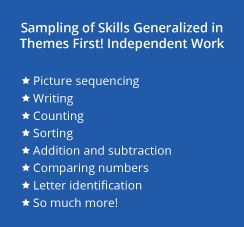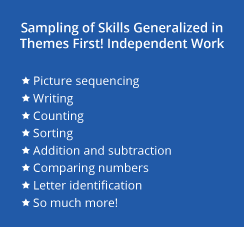Making Theme-Based Instruction Work for You
If our experience in education has shown us anything, it’s that learning hinges on connection. When we see how ideas connect to each other, those ideas become more meaningful. This is why theme based instruction is so powerful.
 Theme-based instruction is the organization of content and materials around a specific topic, which can be differentiated across a variety of student levels.
Theme-based instruction is the organization of content and materials around a specific topic, which can be differentiated across a variety of student levels.
It cements concepts, and helps ideas become more relevant for students. But theme-based instruction can be rough on educators.
It’s challenging to cherry-pick material that’s appropriate for students across different learning levels, especially when you’re already short on time for lesson preparation.
We’ve put together a list of tips to help you make theme-based instruction work in your classroom:

1. Keep in mind that topic-specific content can be parsed into different levels for students with vastly different skills.
Themes First! offers independent work (IW) activities across STAR levels 1, 2, and 3, with each lesson providing opportunities for generalization. Skills taught in Discrete Trial (DT) and other direct teaching methods are incorporated into these work units, offering students a chance to practice skills linked to a specific theme.
Which skills are commonly generalized into IW units? Glad you asked!
Here’s a short sampling: picture sequencing, writing, counting, sorting, addition and subtraction, understanding concepts of value, and much, much more. Check out this free independent work reading activity from the latest Themes First! unit, “Safari Adventure.”
2. Vary activities to promote student engagement.

We know that student interest varies across topics and methods of teaching, so you will find art, cooking, simulations, videos, games, and more to optimize engagement and learning.
Circle time is a great opportunity to engage students with theme-based content.
Here’s another fun safari-themed activity to use during circle time.Chances are, the more you can vary your curriculum, the more your students are going to stay engaged.
Themes First! has your back on this one. Choose from small group activities developed around a variety of themes, each accompanied by learning objectives, activity scripts, and detailed instructions to teach the lesson.
3. Integrate curriculum content areas for meaningful learning.

Themes First! gives students opportunities to practice skills across receptive and expressive language, pre-academics, and play and social interaction through engaging routines (e.g. circle, group, independent work, etc.). Incorporating these skills into selected topic areas will help students make lasting connections in preschool and beyond!
So, what can theme-based instruction offer you?
Hopefully a classroom full of engaged and curious learners!
